Language
- Deutsch
- English
- Español
- Français
- Italiano
- Nederlands
- Português
Currency
- AUD Australian Dollar
- CAD Canadian Dollar
- EUR Euro
- GBP Pound Sterling
- SGD Singapore Dollar
- USD US Dollar
- ZAR Rand

If you’re looking for the ideal destination for an authentic African safari experience, they don’t get better than these three. Three of the best national parks in Africa, the Masai Mara National Reserve, Serengeti National Park and Kruger National Park each offer a range of experiences and adventures to suit every kind of traveller – from honeymooners and solo adventurers to families and friends.
But how do you choose between these three incredible destinations? Serengeti vs Masai Mara? Kruger National Park vs Serengeti? Which one is the best for a safari? Because we’ve been travelling to these incredible wildernesses since 1998, we’ve broken down this complicated subject to help you choose the destination that’s right for your travel wishes.
| Masai Mara | Serengeti | Kruger | |||||
|---|---|---|---|---|---|---|---|
| Safari Country | Kenya | Tanzania | South Africa | ||||
| Dry Seasons | Jan–Mar Jun–Oct |
Jan–Mar Jun–Oct |
May–Oct | ||||
| Wet / Green Seasons | Nov–Dec Apr–May |
Nov–Dec Apr–May |
Nov–Apr | ||||
| Cost | $500–$1,750 | $500–$2,200 | $450–$2,000 | ||||
| Highlights | Wildebeest Migration Cultural interactions Big cat sightings Hot-air balloon safaris |
Wildebeest Migration Cultural interactions Excellent year-round game viewing |
Unrivalled Big 5 game viewing World-class amenities & service |
Let's start with the broadest of distinctions: the Kruger National Park lies in South Africa, whereas you travel to Tanzania for the Serengeti and Kenya for the Masai Mara.
Tanzania and Kenya border each other – in fact, the Masai Mara and Serengeti share an unfenced border for animals but not humans. Together they form the Serengeti-Mara ecosystem, one of the largest (about twice the size of New Jersey) and most protected ecosystems on Earth. This vast wilderness area provides the stage for one of nature's greatest spectacles, the Wildebeest Migration.
The Masai Mara National Reserve is a protected wilderness area in south-western Kenya, along the border with Tanzania. Its vast rolling plains, complete with solitary thorn trees and distant purple hills, characterise the Masai Mara landscape. This is the stuff of Out of Africa and the sunsets are some of the most evocative you'll see. There are few trees because, over centuries, elephants have knocked many of them down.
Getting to the Masai Mara is quite simple. You'll fly to Kenya's capital, Nairobi, before boarding a light aircraft to one of the Masai Mara's airstrips.
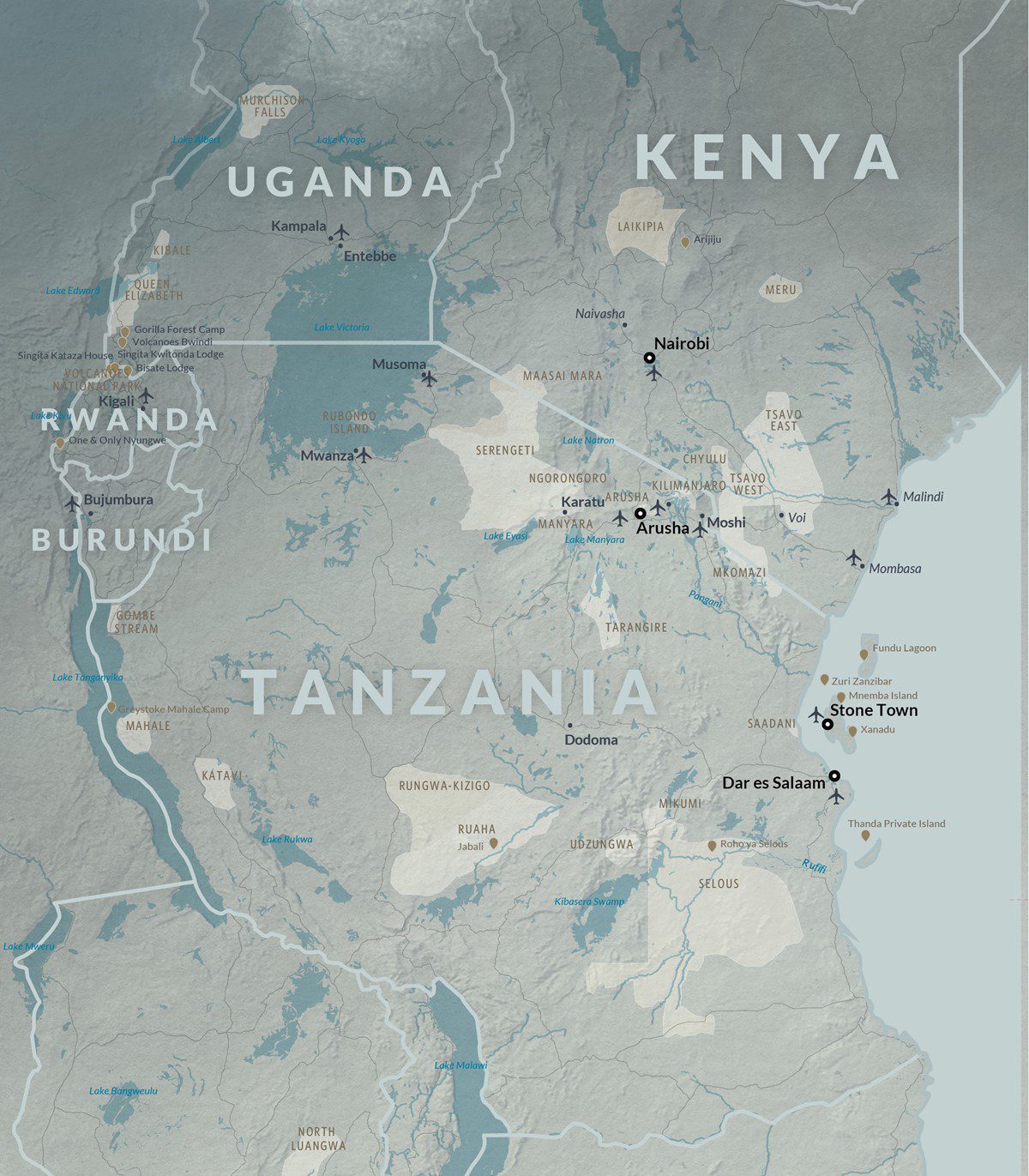
The Serengeti National Park is located in northern Tanzania and stretches over 14,763 square kilometres (5,700 square miles). It's contiguous with the Ngorongoro Conservation Area (home to the famous Ngorongoro Crater) and the Masai Mara National Reserve. The Serengeti is a land of beautiful open savannah as well as some tangled woodland and scrubby hill country. ‘Serengeti' means ‘the land that moves forever' or the ‘land that goes on forever'.
To get here, you'll fly into Kilimanjaro International Airport and overnight in the lively town of Arusha, the gateway to Tanzania's famous Northern Safari Circuit.
The Kruger National Park is situated in the north-east of South Africa. It's one of the biggest national parks in the world, with an area that spans 19 485 square kilometres (7 523 square miles) – almost the size of Israel.
Don't expect vast sweeping savannahs like you see in the Masai Mara or Serengeti; the vegetation here is thicker than in East Africa and much of the landscape is open woodland or denser acacia scrub. It is beautiful and studded with giant trees (perfect for leopards to hang out in) and rocky hills known as koppies that are often the territory of klipspringers: small, monogamous antelope that mate for life.
Fly into Johannesburg, Africa's wealthiest city, and then either be driven or flown to one of Kruger National Park's numerous airstrips on a short-haul flight. The park shares its borders with private game reserves like Sabi Sands, Thornybush and Timbavati – outstanding destinations that offer exclusive safari experiences.
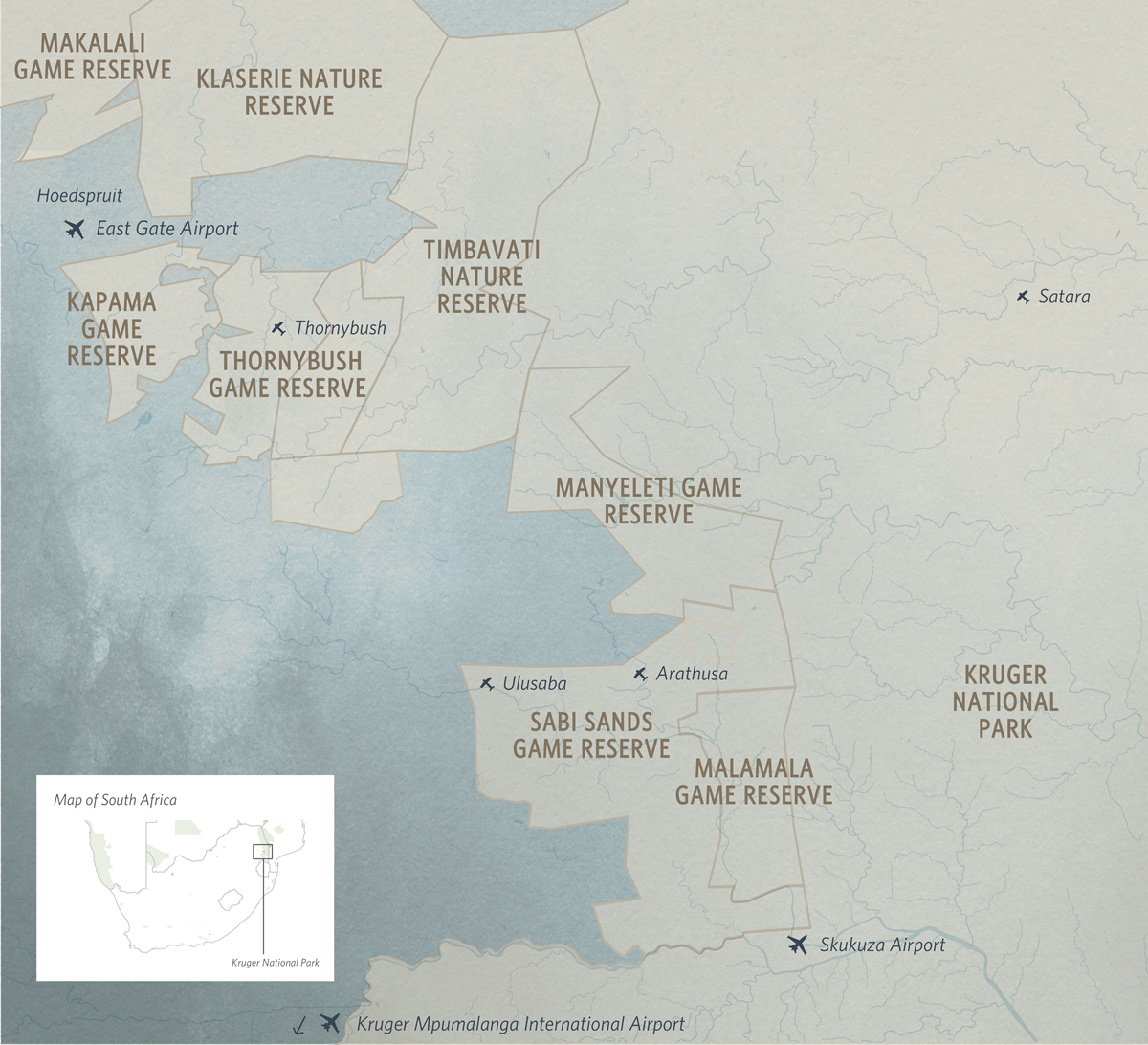
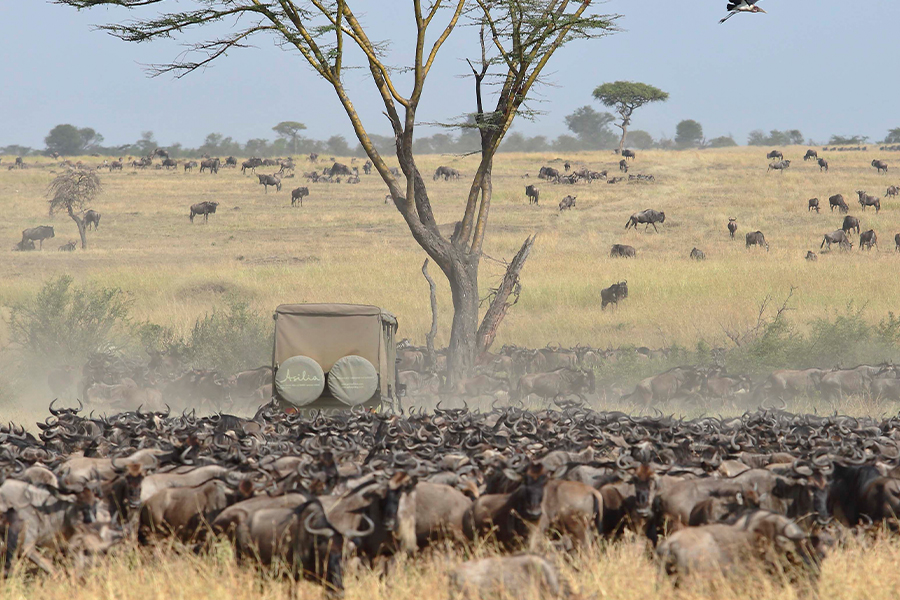
The wildlife in each destination is world-renowned. The Kruger offers classic heavyweight game viewing but if you are coming to Africa to see the Big 5, there's no better place to go. You'll often see lion, elephant, rhino, leopard and buffalo all on the same day. The Masai Mara and Serengeti, however, share the stage for our planet's most epic natural spectacle: the Great Wildebeest Migration.
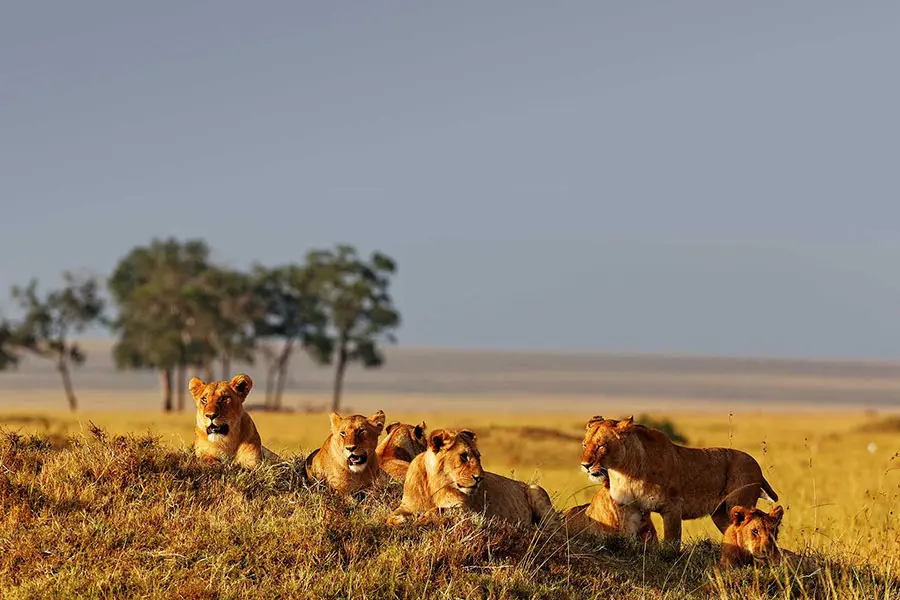
Lions, elephant and buffalo are relatively easy to find in the Masai Mara, but leopard and especially rhino are a little more difficult. The lack of trees and thicket means you have to work harder (rhinos feel the cold and like to move to dense brush at night to stay warm) for a great sighting.
Home to abundant and diverse wildlife throughout the year, the Mara is especially good for big herds and their predators. Besides large prides of lion, it's one of the best places in Africa to see cheetah. These fast felines need open and flat spaces to hunt; witnessing a cheetah chase down its prey is a thrilling sight. Its open plains are perfect for lions' hunting style too. And there are plenty of spotted hyenas, giraffe and Thomson's gazelle.
Head to the Masai Mara from about August to October to see the Wildebeest Migration's mega-herds. The national reserve is fairly small and can get rather busy when the wildebeest arrive, so it's always a good idea to stay in one of the neighbouring private conservancies. You'll enjoy a more tranquil safari experience, but you're still close enough to the Migration's hot spots.
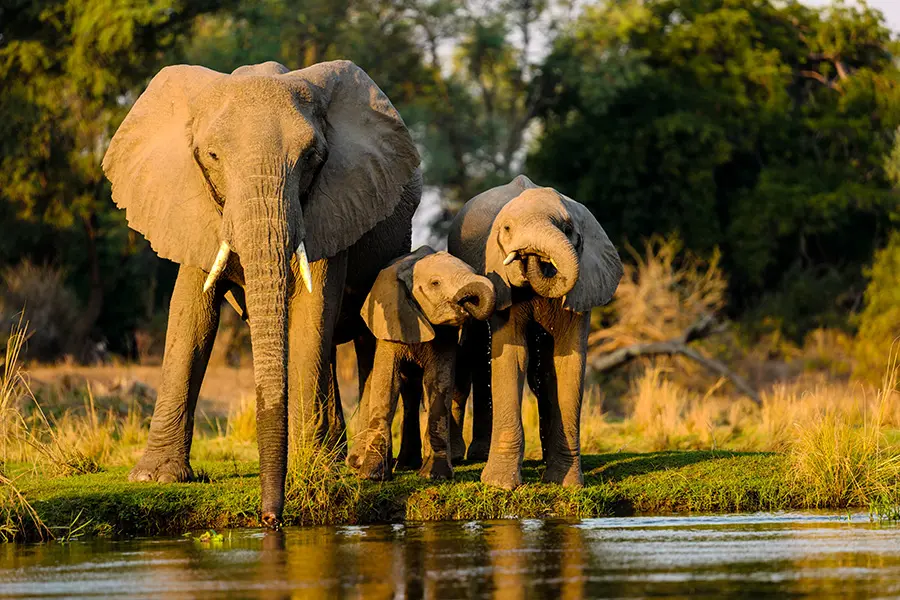
Like the Masai Mara, you'll see plenty of lion, buffalo and elephant – leopards too, if you stay in the Serengeti's hilly areas and around the Serenora River. But rhinos are increasingly hard to find. Lion prides especially love the Serengeti's open terrain.
Great for general game viewing at any time of year, the Serengeti has a similar reputation to the Masai Mara for big cats. A bird count of around 500 different species means it also ranks among the world's top birding destinations.
The Serengeti enjoys the lion's share of the Wildebeest Migration from about November to July. See our handy guide for a month-by-month breakdown of the Great Migration.
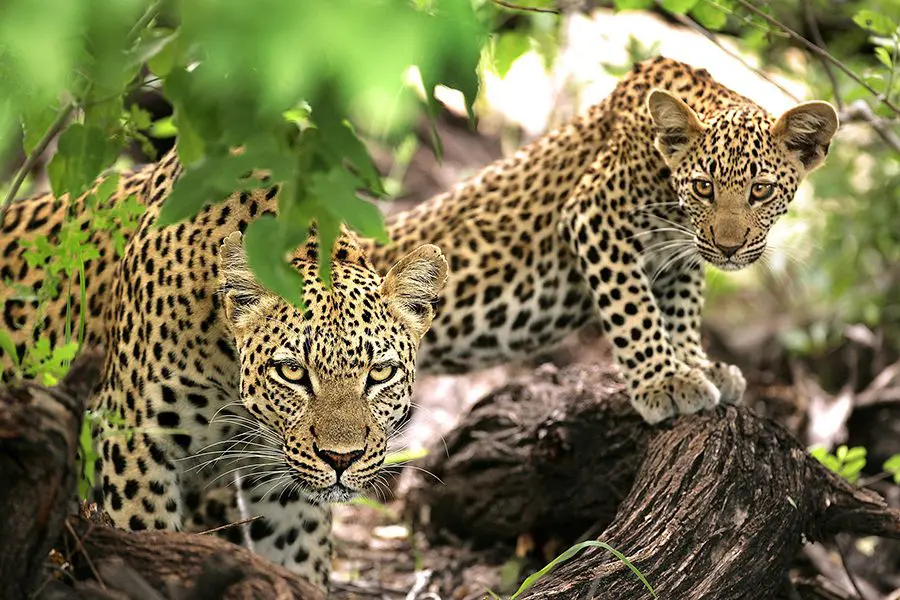
The Kruger's private reserves such as Sabi Sands, Timbavati and Thornybush offer Africa's best Big 5 sightings, especially for the most elusive member of the group: the leopard. The area's hillocks, rocky outcrops and plentiful trees are prime leopard territory. This is also the easiest place to see rhinos, and it reputedly has the densest elephant population of the three.
Expect excellent general game viewing all year round, with chances to see rare and endangered animals such as African wild dogs, cheetah and sable – and it's one of Africa's top birdwatching destinations. The diverse landscape offers shelter to a myriad of kingfisher species (pied, malachite, giant, etc.), lilac-breasted rollers, carmine bee-eaters, raptors like eagles, vultures and owls, and waterfowl along its dams and rivers. Remember that birdwatching is always more spectacular in Green Season (from about November to April) when all the migrant species are resident and there is plenty of food about.
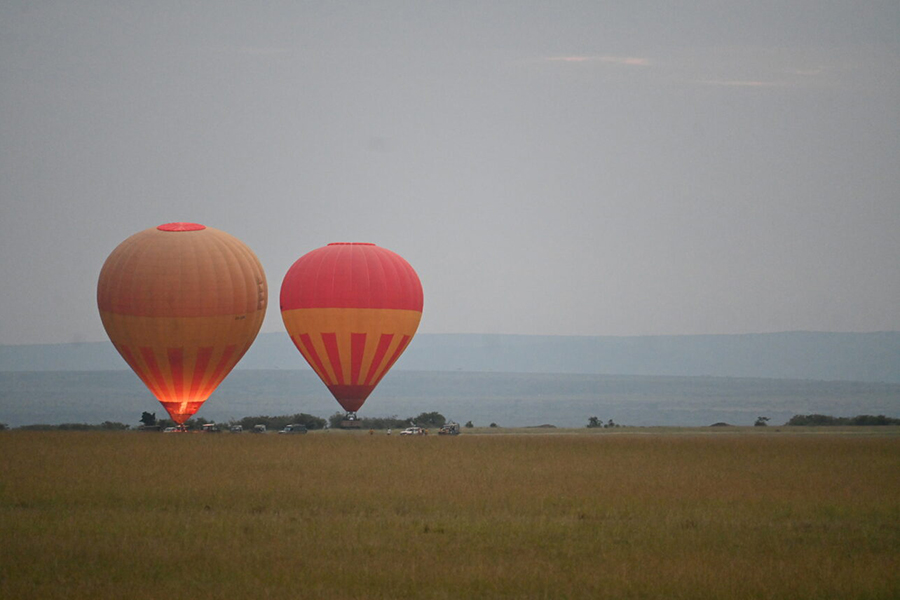
| Masai Mara | Serengeti | Kruger | |||||
|---|---|---|---|---|---|---|---|
| Morning & Afternoon Game Drives | ✔ | ✔ | ✔ | ||||
| Night Game Drives | In private conservancies | In private reserves & concessions | In private reserves | ||||
| Guided Nature Walks | In private conservancies | In private reserves & concessions | In private reserves | ||||
| Hot-air Balloon Safaris | ✔ | In private reserves & concessions | In private reserves | ||||
| Cultural Tours | ✔ | ✔ | ✘ |
Morning and afternoon drives in game-drive vehicles are the main activity in these destinations. A professional guide sits behind the wheel and will identify and explain what you see. Other activities are available too, depending on where you go: the rule of thumb is that you'll have more activities in private reserves than in the public-access parks (for example, neither night drives nor nature walks are permitted in national parks). Family-oriented accommodations have plenty of fun activities and educational programmes for children.
If you're checking into a private safari villa or an exclusive lodge, you might have access to activities like archery, tennis, interactive cooking classes with a private chef, wildlife lectures from experts, photography workshops, guided nature walks, mountain biking or junior rangers' programmes for the kids.
| Masai Mara | Serengeti | Kruger | |||||
|---|---|---|---|---|---|---|---|
| Dry Seasons | Jan–Mar Jun–Oct |
Jan–Mar Jun–Oct |
May–Oct | ||||
| Wildebeest Migration Season | Aug–Oct | Nov–Jul | n/a | ||||
| Safari High / Peak Season | Jun–Oct | Jun–Oct | Jun–Aug | ||||
| Safari Low / Green Season | Nov–Dec | Nov–Dec | Nov–Apr |
Choosing when to go to the Serengeti vs Masai Mara vs Kruger National Park is important. The ‘best' time to go is generally regarded as during their dry seasons, simply because the animals are easier to find. Furthermore, the climate is at its most pleasant (the extreme heat of summer has passed), the malaria risk is very minimal, and game viewing is usually easier as vegetation is at its thinnest (especially in the Kruger) and animals are concentrated at water sources.
Timing is also going to influence the cost – a safari in the high season will be more expensive than the low season. And if you want to view the Wildebeest Migration (especially its more dramatic moments like the mid-year river crossings), then you'll be paying a little more and will need to book your safari up to a year in advance.
The more affordable low or Green Season has a special magic too, offering green, bird-filled landscapes and plenty of animals – often with newborns – to see. Green Season is also good for avoiding the crowds and for taking spectacular photographs as the lush greenery, bright light and lack of dust give you crisp, exciting images. Read our handy guide to learn more about a Green Season safari.
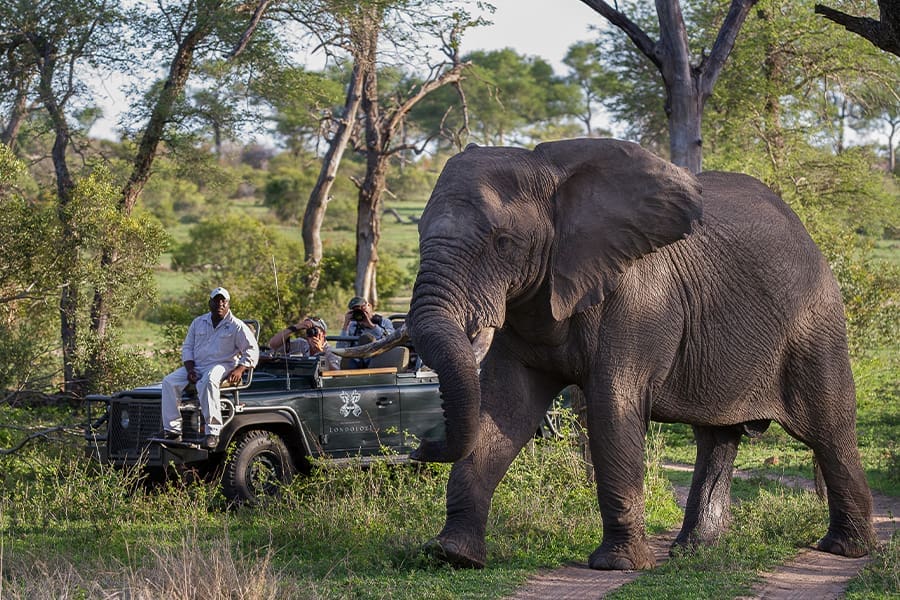
Embrace the moment and slow down on safari for an intimate encounter with Africa’s incredible wildlife.
Thanks to an abundance of wildlife and a temperate climate, the Mara is a fabulous year-round safari destination. There are two rainy seasons to take note of:
The best time to see the Wildebeest Migration in the Masai Mara is from about August to October. August is generally considered the best time to witness the dramatic river crossings from the Serengeti into the Mara, where they'll graze until the short rains in November propel them to head back into the Serengeti.
The Masai Mara can get rather busy during high season (June to October), especially around the river crossings, so it's vital to book up to a year in advance if you want a front-row seat. It's also a good idea to stay in one of the Mara's private conservancies to avoid the crowds this time of year.
Expert tip: the Masai Mara is great between January and the end of March. The weather is usually mild and dry, and most of the safari crowds are absent.
Like the Masai Mara, the Serengeti is a fantastic year-round safari destination with the same two rainy seasons: the ‘short' and ‘long' rains. The Serengeti's colossal variety of animals and mild climate means it can be visited at any time of year. Remember, the animals do not leave when it rains, but the crowds do – so you may have fantastic sightings all to yourself!
The Migration moves around the Serengeti between November and July, crossing the crocodile-infested rivers into the Masai Mara around August. The best time to see rip-roaring predator action is during the Migration's calving or birthing season (February to March) when over 8,000 wildebeest babies are born each day. Fearsome predators swoop and feast on easy prey across the southern Serengeti. It's a bittersweet ballad; the circle of life played out as a live-action drama.
The Kruger's dry season is from May to October. Spotting and following wildlife is easy at this time – the region's vegetation is low and sparse, and animals do not stray far from the dry season's last remaining water sources.
It is also a very comfortable time of year to visit the Kruger National Park as there are few mosquitoes, little if any rain, and temperatures are pleasantly warm during the day and refreshingly cool at night.
Keep in mind, the Kruger National Park can get rather busy between June and August, as this period coincides with local school holidays. It's always a good idea to opt for a safari in one of the Kruger's private game reserves – these quiet, exclusive-use areas are contiguous with the national park and allow special activities like walking safaris and night game drives. Learn more about the difference between a safari in the national park vs private game reserves in our handy guide.
The summer rains arrive in November and remain until around April. These short-lived, afternoon thundershowers transform the Kruger into a beautiful, lush green landscape which makes for superb photography. During this ‘Green Season', game viewing is still good. Many animals give birth, which means high levels of predator action! It's also the best time to visit the Kruger National Park for bird watching and to combine your safari with a Cape Town beach holiday.
No matter which one you choose, an African safari is always going to be a significant investment, so it's crucial to match the right destination, accommodation style and experience to your expectations.
The rule of thumb is that the more you are able to pay, the more exclusive and private your safari becomes – and, generally, the better the quality of your wildlife viewing. This is because exclusivity means fewer vehicles to track the animals. National parks allow visitors to drive their own cars, so sightings of leopards and lions attract a lot of spectators. In more private areas, the number of game-drive vehicles is closely monitored around animal sightings; usually, only two are allowed at a time.
Note: the below costs are guidelines only and an average per person per night, sharing a room in high and low seasons – excluding international flights, visas and optional activities.
| 4-Star Comfort | 4-Star Luxury | 5-Star Luxury | |||
|---|---|---|---|---|---|
| Low | High | Low | High | Low | High |
| $500 – $650 | $850 | $700 | $1,200 | $1,200 | $1,300 – $1,750 |
Private conservancies in the Masai Mara and Serengeti offer exclusive safaris away from what can be very crowded public areas, especially when the migrating wildebeest is passing through. Although the Serengeti is a huge area, many visitors want to be around the Mara River to the north, which is where the wildebeest is heading at mid-year.
| 4-Star Comfort | 4-Star Luxury | 5-Star Luxury | |||
|---|---|---|---|---|---|
| Low | High | Low | High | Low | High |
| $500 – $700 | $800 | $1,000 – $1,300 | $1,500 | $1,700 | $2,200 |
| 4-Star Comfort | 4-Star Luxury | 5-Star Luxury | |||
|---|---|---|---|---|---|
| Low | High | Low | High | Low | High |
| $450 | $650 | $750 | $850 – $1,000 | $1,300 | $1,700–$2,000 |
The Kruger National Park is a large, public-access area in which you can safely self-drive around. But for almost guaranteed close-up encounters with the Big 5 – and barely any other visitors around – you should consider the private game reserves adjoining the Kruger National Park. These include areas like Sabi Sands, Thornybush, Timbavati, Kapama and Klaserie.
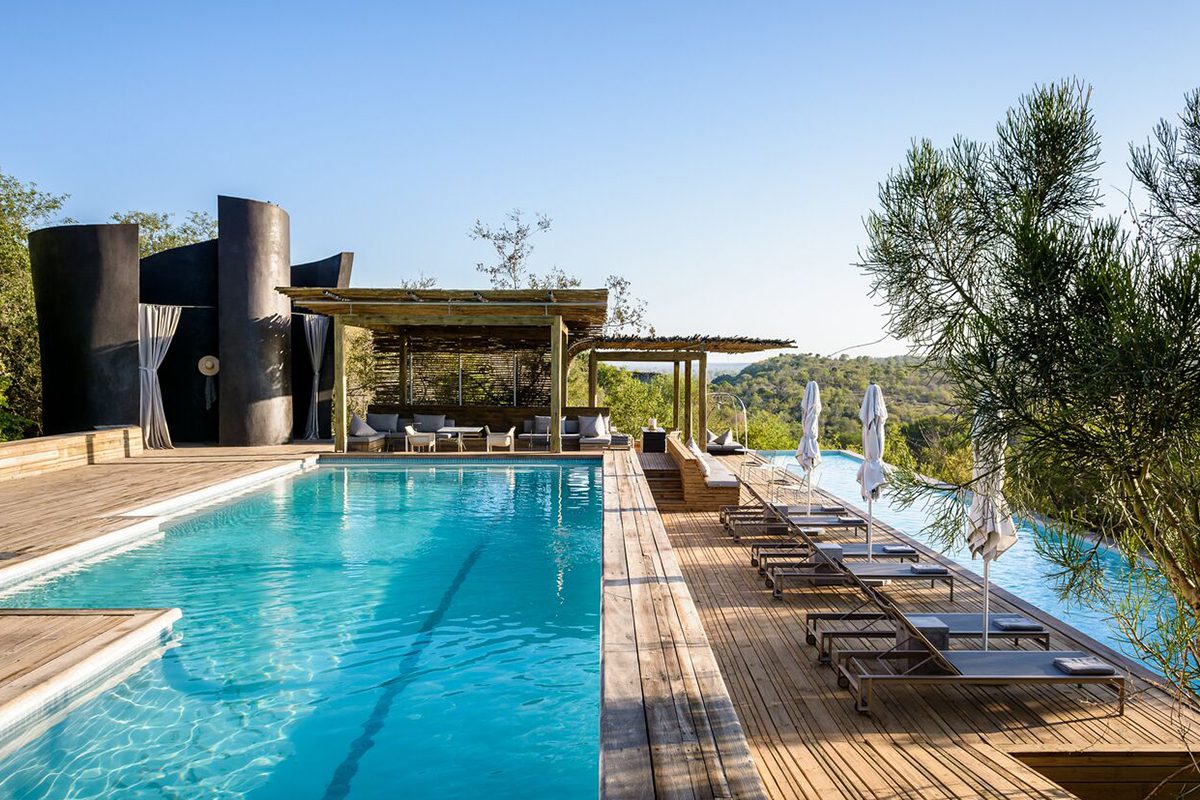
Safari accommodation ranges from walk-in tents with beds and en suite bathrooms to palatial villas with tennis courts and butler services. You'll head out on morning and afternoon game drives with sharp-eyed guides, but since lodges often overlook a waterhole or river, you can also enjoy great ‘armchair safaris'.
Accommodation in these destinations range from large almost ‘resort-style' establishments to thatched lodges and tented camps complete with flickering lanterns and old-fashioned bucket showers.
Ranging from tented camps to large resort-style lodges, accommodation in the central and eastern Masai Mara is busy during Migration season. We recommend more exclusive camps in the reserve's northern private conservancies. You'll be close enough to all the Migration hot spots, but able to retreat to tranquillity. If you want to see the Wildebeest Migration, book your accommodation about a year in advance.
Camps are often situated on the path of the Migration, so you'll need to match a camp with the right time of year if you want to see the wildebeest – or opt for a mobile camp that moves with the herds. Book accommodation well (up to a year) in advance for the Migration's big events: the crossing of the Grumeti and Mara Rivers.
The Kruger offers a vast range of experiences and prices: choose from intimate honeymoon hideaways, family-friendly lodges and exclusive-use villas with private chefs and guides. But strip away the luxurious add-ons like the gym, spa and private pool, and you may find some very well-priced accommodation. The Kruger's good for small, informal camps and great for kids.
When comparing trips to the Serengeti vs Masai Mara vs Kruger National Park, you'll find a safari for every type of traveller. But certain destinations are better than others for specific requirements.
| Masai Mara | Serengeti | Kruger | |||||
|---|---|---|---|---|---|---|---|
| Solo Travellers | ✔ | ✔ | ✔ | ||||
| Couples | ✔ | ✔ | ✔ | ||||
| Honeymooners / Celebrating a Special Occasion | ✔ | ✔ | ✔ | ||||
| Families With Young Children | ✘ | ✘ | ✔ | ||||
| Families With Older Children | ✔ | ✔ | ✔ | ||||
| Photographers | ✔ | ✔ | ✔ | ||||
| Cultural Tourists | ✔ | ✔ | ✘ | ||||
| Adventure Seekers | ✔ | ✔ | ✘ | ||||
| Luxury Seekers | ✘ | ✘ | ✔ |
Popular with honeymooners and couples, the Masai Mara's iconic landscapes and easy game viewing – especially big cats – make it a great destination for an introductory safari. Family-friendly Masai Mara safari lodges and camps are better suited for older children rather than very young ones. A great choice to sample a taste of local Maasai culture.
Home to some of the most dramatic chapters of the Wildebeest Migration as well as predators in abundance, the Serengeti is a photographer's paradise. Its more intimate camps are ideal for romantic travel, while families will find child-friendly accommodation in the Serengeti – although we recommend it for older children.
Its premium lodges provide accommodation for the most discerning of travellers, but the Kruger is also a great destination for honeymooners as well as families with children of any age. Wildlife photographers will not be disappointed with the quality of sightings in the private reserves, and if you simply have to see the Big 5, there's no better place to go.
Choosing whether to go on safari in the Serengeti vs Masai Mara vs Kruger National Park is an easy decision if you have sufficient budget and time – you can experience all three! Smooth-running logistics and daily flights make it possible to combine each, with a host of other iconic destinations.
For a different take on Africa's wildlife and landscapes (a diverse safari experience), we recommend adding another game reserve or two, a one-of-a-kind gorilla trekking expedition, or perhaps concluding your trip with a beach holiday. Days on safari can be long, dusty and action-packed, which is why we always suggest crowning your trip with white-sand beaches, flourishing coral reefs and a butler service right down to the ocean's edge.
Below is a guideline for destinations that can easily be combined with a safari in the Serengeti vs Masai Mara vs Kruger National Park:
| Masai Mara | Serengeti | Kruger | |||
|---|---|---|---|---|---|
Destinations in Kenya:
|
Destinations in Tanzania:
|
Destinations in South Africa:
|
|||
Destinations in East Africa:
|
Destinations in East Africa:
|
Destinations in Southern Africa:
|
|||
Indian Ocean islands:
|
Indian Ocean islands:
|
Indian Ocean islands:
|
‘Bush-and-beach' combinations are easy from the Masai Mara – Kenya's Indian Ocean coast, dotted with beaches like Diani, Galu and Lamu, and is home to family resorts and boutique hotels. You can fly there via Mombasa straight from the Masai Mara.
It's also worth adding another safari destination in Kenya. Samburu or Amboseli are especially recommended as they are very different to the Mara – as are the Laikipia region and Lewa Wildlife Conservancy for more exclusive game-viewing experiences. Lewa is one of the best places in East Africa to see rhino.
The Serengeti is at the heart of Tanzania's convenient Northern Safari Circuit, which includes the Ngorongoro Crater, Tarangire National Park and Lake Manyara.
The Indian Ocean island of Zanzibar is the Serengeti's natural combination for a bush-and-beach holiday, but you could also choose a more unusual combination. Go chimpanzee trekking in the mystical Mahale Mountains, or explore the untamed Nyerere National Park (previously Selous) by 4×4, on foot and by boat. Nyerere sees about 1% of Tanzania's safari visitors, meaning you'll often be the only vehicle at sightings.
The most popular combination is with Cape Town. You can fly there via Johannesburg and add experiences like whale watching (if visiting in August or September), meeting endangered African penguins, and exploring Table Mountain and the gorgeous Cape Winelands.
It's also very simple to combine the Kruger with Victoria Falls – and you can even fly directly to Mozambique to enjoy a spectacular beach holiday in the untouched Bazaruto or Quirimbas archipelagos.
Chat with someone who's been there. Get in touch with one of our Africa Safari Experts to help tailor-make a trip that's right for you: